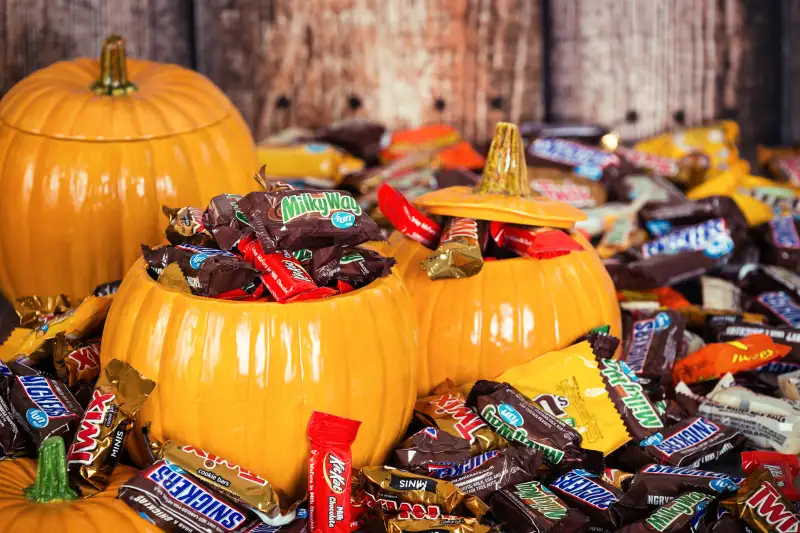The Psychology Behind How You Decide What Halloween Candy to Give Trick-or-Treaters

You can be forgiven for having a panic attack the next time you’re confronted with a bunch of little Spider-Mans and Elsas at your door demanding candy on Halloween. After all, you may feel judged by trick-or-treaters who think you're being stingy because of your choice of candy. Maybe those tiny fun-size bags of Skittles just don't cut it?
Or at least some stores and candy brands may want you to feel that way.
Why do some households spend big money just so they can give out full-size candy bars on Halloween? Is it just because they're super generous and like to put smiles on kids' faces? Or are there other forces at play, nudging shoppers into an arms race over bigger and better Halloween candy?
As a new Fortune story points out, retailers like Costco and Amazon now routinely push bulk quantities of full-size Snickers and Hershey bars. This has an effect on people, as store displays and featured products provide cues to shoppers as to what they're expected to buy, Wharton professor of marketing and psychology Deborah Small explained to Fortune.
Another factor could be categorized under "keeping up with the Joneses." If you’re aware that your neighbor is handing out full-size bags of Skittles, you might feel pressure to do the same, or at least be generous with the amount of fun-size M&M bags you dole out.
According to the National Confectioners Association, 85% of households still give out the smaller-size candy. But some people feel the pressure to do it big. In particular, people may hand out full-size KitKats or Snickers on Halloween in order to make themselves look good — not only in terms of being generous, but rich.
“A lot of this has to do with social signaling and how they want to look to others and how people want to look is complex—high status and wealthy and caring and moral,” Small said.
After all, no one wants to look like a cheapskate, especially compared to the people they see regularly in their neighborhood, and the pressure to conform to social expectations can be hard to shake.
So, what should you give out to trick-or-treaters this Halloween? As long as you’re not one of those awful families that hands out boxes of raisins, you should be fine, but consistency is key. As Deloitte behavioral economist Susan Hogan told Fortune, customer dissatisfaction is greater with companies who make promises about their generous reward programs that fall through than with companies with no reward programs at all. So if you’re going to go large with the Snickers, you better commit to being the house with full-size candy on every Halloween — or risk upsetting all the little Star-Lords and Hermiones who ring your buzzer.